EXPLAINED: All you need to know about $6.5bn Capricornia Energy Hub project
There’s a massive new renewable energy dream near Eungella that includes hydro and more. Our exclusive interview with the project lead reveals the key details you need to know.
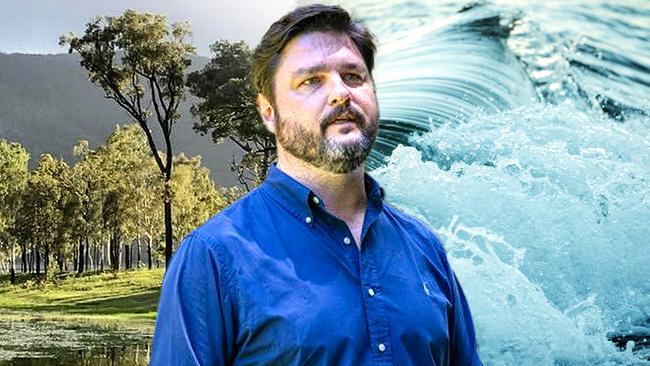
Business
Don't miss out on the headlines from Business. Followed categories will be added to My News.
There is another pumped hydro project in the works for the Mackay region but it is separate from the controversial $12bn state-led project booked for the Pioneer Valley.
The $6.5bn project, known as the Capricornia Energy Hub, would implant new solar, wind and pumped hydro infrastructure into one concentrated area west of Eungella.
To give you a clear idea of what could be rolling out if the hub gets the necessary approvals, we spoke with the project lead to find out the key details.
There are distinct differences between the government’s Pioneer-Burdekin scheme and the Capricornia Energy Hub, which is being led by Scandinavian giant Copenhagen Infrastructure Partners together with CS Energy and the Capricornia Energy project team.
WHERE IS IT?
Close to the Eungella Dam, more than 100km west of Mackay.
The pumped hydro and wind farm component will be located on a single property, Eungella Station, which butts up against the dam.
The upper reservoir will be built about 3km away from the existing dam and the lower reservoir will be built on the Broken River, with a 1.2km-1.5km distance between them.
WHAT IS IT?
A concentrated energy hub that consists of three pillars: a 750MW pumped hydro plant as well as a 500MW wind farm on the Eungella Station, plus a solar farm further west.
WHAT IS IT NOT?
Capricornia Energy Hub is not a water security project like the proposed Urannah Dam.
Some personnel from Bowen River Utilities, which had been working on Urannah Dam, have shifted over to the CEH team, but there is no physical or legal connection between the two projects.
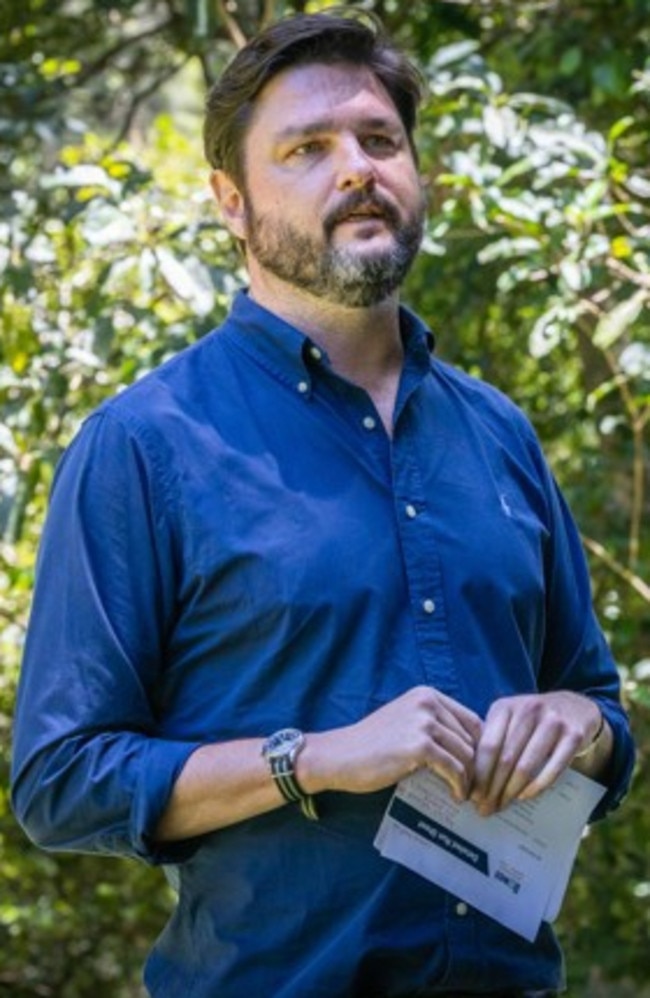
Capricornia Energy is also not connected to the Pioneer-Burdekin project, though both are pumped hydro schemes.
Pioneer-Burdekin is a government enterprise, run by public entity Queensland Hydro.
It is a much larger, more powerful and more costly system and is situated in a different part of the Mackay region.
WHO IS PROPOSING IT?
It is a three-way enterprise: Copenhagen Infrastructure Partners, CS Energy and the Capricornia Energy project team.
CIP is a global fund that invests in renewable energy projects, including the Star of the South project in Victoria, a massive offshore wind farm.
CS Energy is a Queensland government-owned electricity provider.

In Central Queensland it operates the Callide coal-fired power station.
It is understood CS Energy will operate the hub once it is completed.
“This project provides an opportunity to further diversify our portfolio so that we have a balanced mix of energy sources to support our customers’ requirements and Queensland’s energy needs,” CS Energy CEO Andrew Bills said earlier this year.
THE PUMPED HYDRO STRUCTURE
A 1.2km underground tunnel will be drilled between the upper and lower reservoirs.
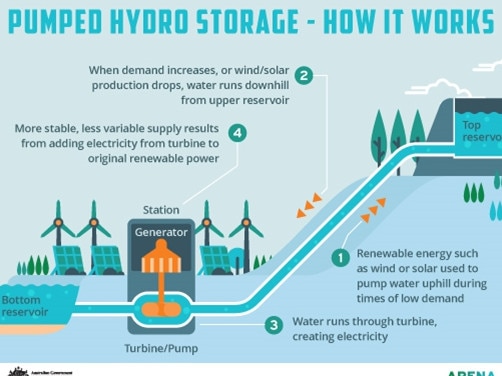
The project has a 300m height difference or “head” between the upper and lower reservoir.
The pump station will be below the lower reservoir in terms of height but sit above ground.
WHERE WILL THE TRANSMISSION LINE GO?
The project involves building a new transmission line west from the Eungella Station property.
This line will then link up with a pre-existing 275 KV transmission line on the Turrawulla Station property, which in turn connects to the Nebo-Strathmore substation.
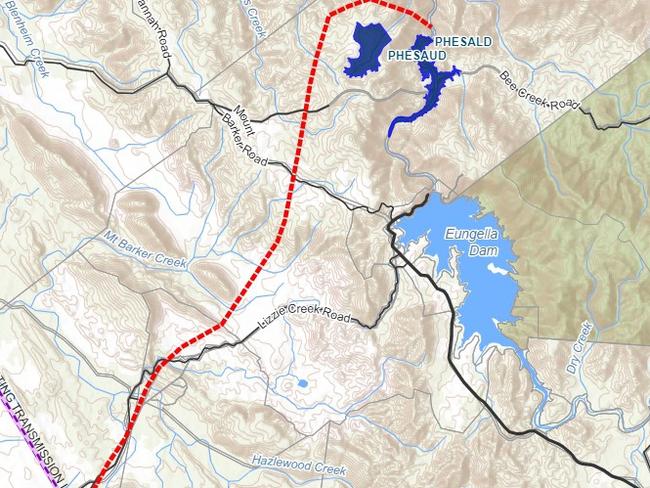
GENERATION CAPACITY
The pumped hydro component is a medium-duration storage system, estimated at 750MW for 16 hours.
It will feature three 250MW turbines, which water passed through to generate electricity.
The wind farm is 500MW and the solar farm will be more than 1000MW.
Altogether the CEH would generate more than 2000MW.
HOW MANY PROPERTY OWNERS WILL BE AFFECTED
So far, two.
Eungella Station will host the wind farm and pumped hydro system, while neighbouring Turrawulla Station will host the transmission cable.
CEH team leader Luke McDonald said the owners of the property were supportive of the project and arrangements were in place to host the infrastructure.

“We will buy a portion of Eungella Station upon which the pumped hydro exists and we will sublease part of Eungella Station for the wind farm,” Mr McDonald said.
“We won’t be inundating any third party property, any state forest or anything.”
WHAT ABOUT THE ENVIRONMENT?
The project is still in the early stages of development and will go through the government’s environmental approvals process.
WHY WAS THIS SITE CHOSEN?
Four reasons.
- Geography – for pumped hydro to work, you need an upper and lower reservoir with a reasonable height of difference between them that is also not too far apart. Mr McDonald said the site fitted that description.
- Hydrology – pumped hydro needs an area that has good access to water and the project team believes the area will deliver the necessary rainfall.
- Geology – The area has weathered rock that could be used for the reservoir walls.
- A lack of environmental constraint – The project team believes the project should pass the EIS process because it is situated away from state forests and biodiverse areas.
Mr McDonald also said Eungella Dam was a contributing factor.
He said if the scheme needed water in an emergency to fill up the lower reservoir, there was an option to buy water from the dam.
“We would release from the Eungella Dam, it will go down the Broken River and then be caught by our reservoir,” he said.
COST BREAKDOWN
Total – $6.5bn
Pumped hydro – $2bn.
Wind and solar – $4.5bn
WHO WILL FUND IT?
Private finance.
Mr McDonald said the project would be funded entirely by Copenhagen Infrastructure Partners.
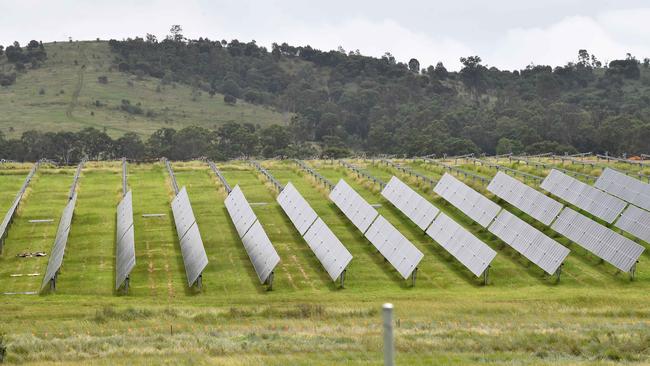
“At this stage, it is privately financed,” he said.
“But CS Energy is coming in as the operator, so there may be a role for them to have some stake in the project, but the current discussion is that they will be the operator of it.”
WHEN WILL IT BEGIN?
2025-2028.
If approvals are secured, construction could begin in 2025 with an estimated three-year construction timeline.




